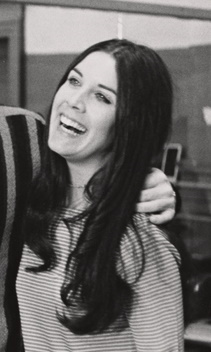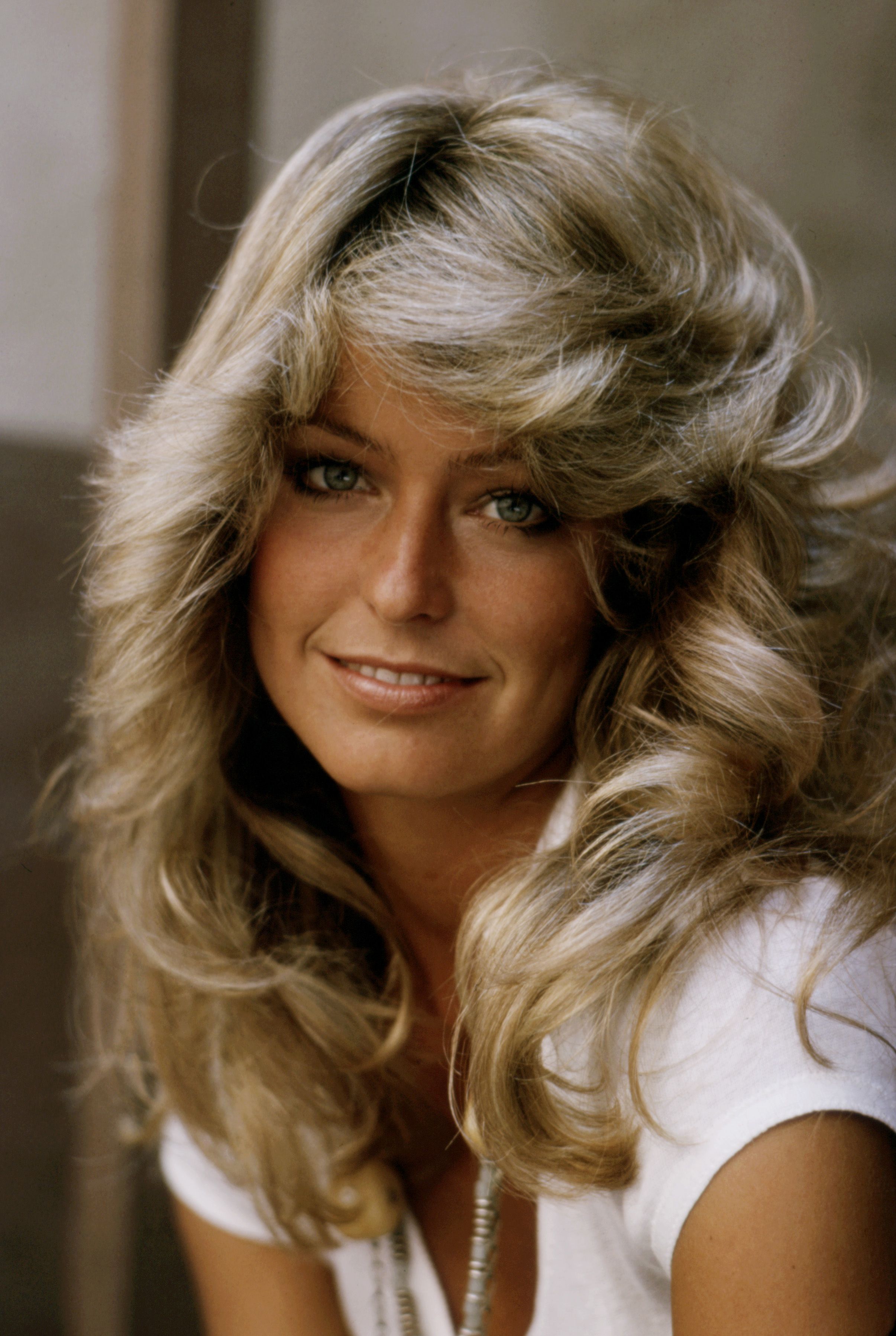1970s straight hairstyles: A Comprehensive Exploration of the Decade’s Sleek Strands

The 1970s, a decade often characterized by its distinctive fashion and cultural shifts, witnessed a profound evolution in hair aesthetics. Moving away from the elaborate, often voluminous styles of the preceding era, a significant trend emerged that championed simplicity, sleekness, and natural flow. This aesthetic, marked by its smooth, linear appearance, became an iconic representation of the period’s broader move towards a more relaxed yet sophisticated form of self-expression. The prevalence of these unadorned, streamlined looks was not merely a fleeting fashion statement but a reflection of changing societal values, influenced by counter-culture movements, the rise of individualism, and a burgeoning interest in natural beauty.
The appeal of these smooth, flowing styles transcended various demographics, becoming a hallmark for both men and women. Its widespread adoption was fueled by its perceived ease and versatility, allowing for numerous interpretations while maintaining a core identity of understated elegance. From the longest, most meticulously ironed tresses to the sharp, precise lines of a blunt cut, the smooth hair aesthetic of the seventies offered a diverse palette for personal styling. This article delves into the cultural context, key variations, styling techniques, and enduring legacy of the decade’s iconic straight hair trends, providing a detailed insight into their profound impact on fashion and popular culture.
Cultural Context and Evolution of the Era’s Sleek Looks
The genesis of the smooth hair aesthetic in the 1970s can be traced back to a reaction against the highly structured and often teased hairstyles of the 1960s. As the decade dawned, a desire for authenticity and a more organic approach to beauty began to take hold. The counter-culture movement, with its emphasis on naturalism and a rejection of artificiality, played a pivotal role in popularizing longer, unstyled hair. However, this naturalism soon evolved into a deliberate styling choice: the meticulously straightened, often incredibly long, mane.
This shift was significantly amplified by the influence of music and film icons. Celebrities such as Cher, with her famously long, dark, and perfectly straightened hair, became a powerful symbol of this new trend. Similarly, actresses like Ali MacGraw epitomized a more casual, yet equally sleek, version of the look, often paired with a simple center part. These figures projected an image of effortless cool and modern sophistication, making the smooth hair trend aspirational for millions. The fashion industry also embraced these linear styles, showcasing them on runways and in magazines, solidifying their status as a defining characteristic of 1970s glamour. The movement towards a less “done” appearance paradoxically required considerable effort, marking a unique intersection of natural aspiration and deliberate styling.
Key Variations and Interpretations Vintage Updo Hairstyles An Exploration Of Post War Elegance of the Smooth Hair Aesthetic
The smooth hair aesthetic of the 1970s was not monolithic; it encompassed a range of variations, each contributing to the decade’s diverse hair landscape.
The Long, Pin-Straight Look: Perhaps the most iconic interpretation, this style featured hair grown to considerable lengths, often past the shoulders or even to the waist, meticulously straightened to achieve a glass-like smoothness. A defining characteristic was the sharp, often unadorned, center part, which created a symmetrical and elegant frame for the face. This look conveyed an air of sophisticated simplicity and was a bold statement against the more ornate styles of previous decades.
The Feathered Look: While often associated with volume, the feathered style, popularized by figures like Farrah Fawcett, actually relied on a straight base. The hair was cut in layers, with the ends expertly flicked or curled away from the face, creating a soft, wind-swept effect. The body of the hair, however, remained largely straight and smooth, providing a sleek foundation for the distinctive outward-flicked layers. This represented an evolution, adding a dynamic element to the foundational straightness.
The Shag: This versatile cut often featured straight hair on the crown, with choppy, graduated layers throughout the mid-lengths and ends. The top section remained relatively smooth, allowing the layers to create texture and movement without sacrificing the overall linear quality. It offered a more rebellious and edgy take on the straight hair trend, favored by rock stars and those seeking a less polished aesthetic.
Blunt Cuts: For those preferring shorter lengths, blunt cuts provided a sharp, sophisticated option. Hair was cut to a single length, often at the chin or shoulder, with a perfectly straight edge. This could be worn with or without bangs, which themselves were often cut in a blunt, straight line, reinforcing the overall linear theme.
Sleek Bobs: A perennial classic, the bob received a 1970s update with an emphasis on extreme smoothness and precise lines. Whether chin-length or slightly longer, these bobs were styled to be impeccably straight, often with a slight inward curve at the ends, exuding a polished and modern sensibility.
Styling Techniques and Tools for Achieving These Straight Looks
Achieving the desired level of smoothness and straightness in the 1970s required considerable effort and the utilization of emerging styling technologies.
The Blow Dryer: The widespread availability of handheld blow dryers revolutionized hair styling. Combined with a round brush, these tools allowed individuals to straighten hair by pulling it taut while applying heat, creating a smooth, sleek finish. This technique was foundational for many of the era’s straight styles.
Flat Irons: While not as sophisticated as modern versions, early flat irons, sometimes even repurposed clothes irons, were used to press hair straight. This method provided an intense level of smoothness, particularly for the long, pin-straight looks. However, it often came with the risk of heat damage due to the lack of temperature control.
Chemical Relaxers/Straighteners: For individuals with naturally curly or wavy hair, chemical treatments offered a more permanent solution for achieving the desired linear effect. These products, applied by professionals or at home, worked by altering the hair’s protein structure to relax curls and create a straighter texture.
Hair Products: A range of styling products, including setting lotions, anti-frizz serums, and shine sprays, were employed to enhance the smoothness, control flyaways, and impart a glossy finish. These products were crucial for maintaining the pristine appearance of the era’s sleek styles throughout the day.
Social Significance and Enduring Influence
The smooth hair aesthetic of the 1970s carried significant social weight. It symbolized a move towards greater personal freedom and a rejection of the more rigid beauty standards of the past. The perceived “naturalness” of these styles, despite the effort involved in achieving them, resonated with a generation seeking authenticity. It was a look that felt modern, accessible, and effortlessly chic, contributing to a broader sense of empowerment and self-expression.
Furthermore, the straight hair trend of the seventies demonstrated a degree of gender fluidity, particularly with long, unlayered straight hair being embraced by both men and women, albeit with different cultural connotations. The emphasis on healthy, shiny hair also laid the groundwork for future beauty trends focused on hair health and natural texture.
The impact of these linear hair fashions extends far beyond the decade itself. The techniques perfected, the tools popularized, and the aesthetic established during this period have continued to influence hair trends for decades. The desire for sleek, smooth hair remains a constant in contemporary fashion, with modern straightening tools and products offering more advanced and hair-friendly ways to achieve similar results. The enduring appeal of the feathered look, the shag, and the classic blunt cut all testify to the lasting legacy of the era’s straight hair revolution.
FAQs Baddie Hairstyles Png An In Depth Exploration Of Digital Hair Aesthetics by 1970s straight hairstyles
What characterized the straight hair trends of the 1970s?
The defining characteristics included extreme smoothness, often achieved through meticulous straightening, a prevalence of long lengths, and a common use of the center part. These styles often conveyed an air of understated elegance and modernity.
How was straight hair achieved during that period?
Achieving these linear looks involved a combination of techniques: extensive blow-drying with a round brush, the use of early flat irons (sometimes clothes irons), and chemical relaxers for individuals with naturally curly hair. Various hair products were also utilized for shine and frizz control.
Which iconic figures popularized these looks?
Celebrities such as Cher, Ali MacGraw, and Farrah Fawcett were instrumental in popularizing the smooth hair aesthetic. Their public appearances and media portrayals made these sleek styles highly aspirational.
Did these styles vary significantly?
Yes, while a core emphasis on straightness persisted, variations included the long, pin-straight look, the feathered style (with a straight base), the shag with its choppy layers, and precise blunt cuts and bobs. These offered diverse interpretations of the linear aesthetic.
Tips by 1970s straight hairstyles
Prioritize Heat Protection: When attempting to recreate these smooth looks, always apply a high-quality heat protectant to the hair before using any heat styling tools. This minimizes damage and maintains hair health.
Invest in Quality Straightening Tools: Modern flat irons and blow dryers offer advanced technology and temperature control, allowing for effective straightening with less risk to the hair’s integrity. Select tools appropriate for hair type and texture.
Utilize Smoothing Serums and Oils: To achieve the glossy, frizz-free finish characteristic of the era’s sleek styles, incorporate smoothing serums or lightweight hair oils into the styling routine. Apply sparingly to avoid weighing down the hair.
Consider a Professional Cut: A precise haircut is fundamental for many of these looks, particularly blunt cuts and shags. A professional stylist can create the necessary layers and lines to ensure the desired shape and flow.
Focus on Healthy Hair: The pristine appearance of the decade’s straight hair relied on healthy, well-maintained strands. Regular conditioning treatments and a balanced diet contribute to strong, shiny hair, which is essential for achieving the best results.
Conclusion by 1970s straight hairstyles
The smooth hair aesthetic of the 1970s represents a pivotal moment in hair fashion history. Its departure from the elaborate styles of previous decades marked a shift towards a more minimalist yet sophisticated form of self-expression. Rooted in cultural movements and popularized by influential figures, these linear looks became synonymous with the decade’s spirit of modernity and individuality. The techniques and tools employed to achieve these styles, though rudimentary by today’s standards, laid the groundwork for contemporary hair care practices. The enduring legacy of these sleek, flowing strands continues to inspire current trends, underscoring their timeless appeal and significant contribution to the evolving landscape of beauty and style.







More suggestion: Videos On How To Do Hairstyles A Comprehensive Guide To Mastering Hair Artistry